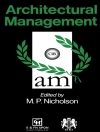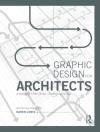Introduction to building façades as revised edition
Façades determine the appearance of a building. Hence, they constitute a major element in architecture. At the same time, the building’s envelope has important functions to fulfil, such as lighting, weatherproofing, thermal insulation, load transfer and sound insulation. Over the past 15 years, façades have become increasingly complex – ‘intelligent’ facades, for instance, adapt to changing climate and lighting conditions. Newly developed materials and technologies have broadened the scope of façade functions.
This book demonstrates the principles of façade construction. It systematically describes the most common types, such as post-and-beam façade, curtain wall, corridor façade or double façade, and provides guidelines for appropriate detailing. Numerous drawings made especially for the book explain the principles of different types of facades, which are then illustrated with built examples. For this second edition, all chapters were revised and all four examples in the case studies chapter were replaced by new material. The new chapter “Future Façades” offers insights into what’s next.
विषयसूची
1 Introduction
2 From Wall to Façade
Solid wall construction
Warm façade, cold façade
Openings in solid wall construction
Bridging the gap
Single glazing
Box window
Insulated glazing
Walls with skeletal structure
Half-timbered construction
Platform and balloon framing
Resolution of the wall into loadbearing structure and façade
Post-and-beam façade
Post façade
Beam façade
Curtain wall
System façade
Double façades
Second-skin façade
Box-window façade
Shaft-box façade
Alternating façade
Integrated façade
3 Principles of Construction
Areas of construction
Façade bearing structures and load transfer
Grid and positioning of the façade within the building
Systems used in façade construction
Post-and-beam construction
Unit system façade
Designing with systems
Openings in façade constructions
Hardware
Windows
Assembly
Building grid and positioning of components
Combination of functions
Detailing principles
Layering of details
Examples of detail development
Masonry cladding
Post-and-beam façade
Unit system façade
Parapet
Plinth unit
Joints
Tolerances
5 Climate and Energy
Façade as interface to the exterior
User comfort
Thermal requirements
Visual requirements
Hygienic requirements
Acoustic requirements
Regulating the comfort level with the façade
Ventilation
Heating
Cooling
Sun and glare protection
Light-directing systems
Sun
Light
Heat
Greenhouse effect
History of adaptive façades
Collector façade
Trombe wall
Transparent heat insulation
Exhaust-air façade
Double façade
Box-window façade
Shaft-box façade
Corridor façade
Second-skin façade
Alternating façade
Integrated façade
7 Case Studies
Unit system façade: Debitel Headquarters, Stuttgart
Solid concrete façade: Zollverein School of Management and Design, Essen
Free-form metal façade: Guggenheim Museum, Bilbao
Timber-frame structure with multiple cladding: Hageneiland Housing, Ypenburg
8 A Look Into the Future
The forces driving new developments
Materials and technology
Technology transfer
Nano coatings
Adhesive materials technology
Smart materials
Production and assembly
Free-form façades
Modular construction
Composite building materials
Generative manufacturing methods
Computer technology
Evaluation strategies
Façade functionality
Design tools
The integrated envelope
Appendix
Authors
Selected Bibliography
Index
Illustration Credits
लेखक के बारे में
Prof. Ulrich Knaack, TU Darmstadt Prof. Thomas Auer, Transsolar Prof. Tillmann Klein, TU Delft Dr. Marcel Bilow, TU Delft












